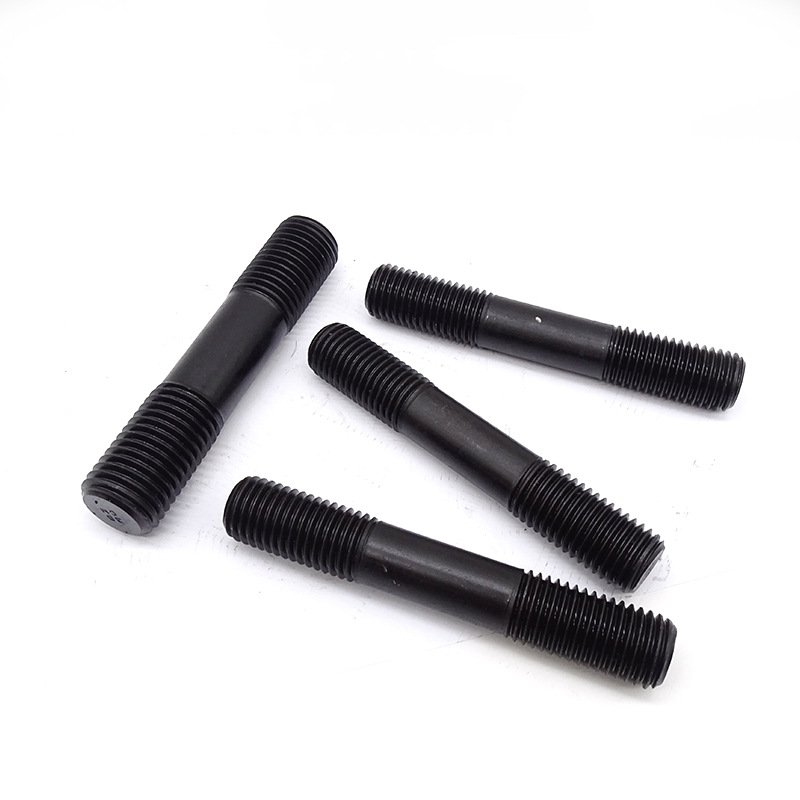

t slot stud
Nov . 13, 2024 09:54 Back to list
t slot stud
Understanding T-Slot Studs A Key Component in Modular Construction
In the realm of modular construction and mechanical assembly, the importance of versatile fastening solutions cannot be overstated. One such solution that has gained significant traction is the T-slot stud. Understanding what T-slot studs are, how they work, and their various applications can shed light on their critical role in modern engineering and construction.
What is a T-Slot Stud?
A T-slot stud is a type of fastener designed to fit into the T-slots of aluminum extrusions or similar framework systems. These studs typically feature a T-shaped cross-section that allows them to slide into the grooves of the extruded material. Once positioned, they can be utilized to secure components or panels without the need for complicated assembly processes. T-slot studs come in various sizes and materials, including stainless steel and aluminum, enabling their use in diverse applications across multiple industries.
Design and Features
The design of T-slot studs is primarily centered around ensuring ease of use and flexibility. The T-shape allows for smooth insertion into the track, facilitating quick assembly and disassembly. Many T-slot studs also come with features such as locking mechanisms that prevent them from loosening over time, a critical requirement in environments subject to vibration or movement.
Moreover, T-slot studs are often accompanied by compatibility with different types of nuts and washers, enhancing their utility. The ability to adjust the position of components easily makes them ideal for applications requiring frequent modifications or reconfigurations.
Applications of T-Slot Studs
t slot stud

T-slot studs are widely utilized in various sectors, including manufacturing, robotics, and furniture design. In manufacturing, these studs provide a flexible means of constructing assembly lines or workstations that can change configurations based on production needs. Their quick assembly capabilities reduce downtime, ensuring efficiency in workflow.
In robotics, T-slot studs serve as essential components in building robotic frames and structures. They allow engineers to create custom, modular designs that can be modified as technologies and requirements evolve. This adaptability is crucial in a field where innovation is rapid, and systems must be able to integrate new technologies seamlessly.
Additionally, in furniture design, particularly in office furniture systems, T-slot studs allow for the creation of modular desks, partitions, and other structures that can be easily adjusted as needs change. This modularity is not only efficient but also environmentally friendly, as it reduces the need for new materials in furniture upgrades or reconfigurations.
Advantages of Using T-Slot Studs
The use of T-slot studs offers numerous advantages. Chief among them is the simplicity they bring to assembly processes. Traditional fasteners often require tools that can be cumbersome and time-consuming to use. In contrast, T-slot studs typically require only a single tool for adjustments, making assembly faster and more efficient.
Another significant benefit is the reusability of components. In environments where designs frequently change, being able to dismantle and reuse T-slot studs enables cost savings and reduces waste. This aspect aligns with modern sustainability practices, allowing businesses to minimize their environmental footprint.
Conclusion
T-slot studs represent a pivotal advancement in the field of modular construction and mechanical assembly. Their unique design, coupled with a wide range of applications, makes them an invaluable tool for engineers, designers, and manufacturers. As industries continue to evolve and embrace modularity and flexibility, the role of T-slot studs is poised to become even more prominent, paving the way for innovative construction solutions that meet the demands of a rapidly changing world. Whether in manufacturing, robotics, or furniture design, T-slot studs are indeed a cornerstone of modern assembly practices.
Latest news
-
Hot Dip Galvanized Bolts-About LongZe|High Strength, Corrosion Resistance
NewsJul.30,2025
-
High-Strength Hot Dip Galvanized Bolts - Hebei Longze | Corrosion Resistance, Customization
NewsJul.30,2025
-
Hot Dip Galvanized Bolts-Hebei Longze|Corrosion Resistance&High Strength
NewsJul.30,2025
-
High-Strength Hot-Dip Galvanized Bolts-Hebei Longze|Corrosion Resistance&High Strength
NewsJul.30,2025
-
Hot Dip Galvanized Bolts-Hebei Longze|Corrosion Resistance&High Strength
NewsJul.30,2025
-
Hot Dip Galvanized Bolts - Hebei Longze | Corrosion Resistance, High Strength
NewsJul.30,2025

